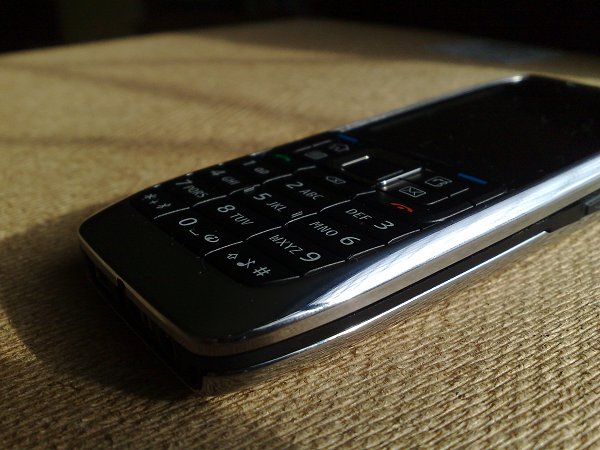Many of the mobile unit manufacturers dedicate a lot of effort to developing phones, targeted at business users. So is the E-series of Nokia, which has been created for and is intended to encompass the above circles. After the brief introduction it is now time to present the phone that will be reviewed in the following text, namely – the Nokia E51. Being a “successor” to the E50 and, as you may be already aware, meant to serve the needs of business customers, it comes with a very pleasurable and stylish design, compact size, and quite a good set of functions.

Design:
On hearing the words “a business phone”, many of the mobile technology admirers will think of an exceptionally big-sized device featuring an unsightly design. Though true for other models, in our case it is vice versa: the Nokia E51 is both extremely compact and light-weight; in fact, it can be ranked as the smallest of all E-series phones.

It supports/sports
- S60 3.1 Edition (Symbian based phone)
- GSM 850/900/1800/1900, WCDMA 850/2100 MHz.
- 3G, HSDPA, or WLAN connection
- 2 megapixel camera
- FM Visual Radio
- Video streaming and playback with H.264 (MPEG-4), 3gpp, and Real codecs
- Video recording in H.263 (3gpp) and MPEG-4
- 2″ (240 x 320 pixels), active-matrix color display supports up to 16 million colors
- Push to talk feature
- Email with support for POP3, IMAP4
- Email client
- (x)HTML web browser
- GPRS/EGPRS (Class A, multi-slot class 32)
- HSDPA (high-speed downlink protocol access) up to 3.6 Mbit/s (3G)
- Wi-Fi, Bluetooth, USB, Infra Red
- Quickoffice (Word, Excel, PPT)
- Adobe PDF Reader
- Printer support- Zip Support

Interface:
Е51 is a phone running on Symbian Operating System with S60 interface. To be precise, the exact version is Symbian 9.2 with S60 3rd Edition Feature Pack 1, which is the latest one used in a Nokia phone up to now. This means that the phone is almost absolutely identical to other using this OS/UI and the only changes are due to minor personalization of the OS.
The main menu can be viewed as 3x4 grid of icons that can also be displayed as a list (it’s chosen directly from the main menu)With the E 51 we will also encounter the new option (also present in N95 8GB), namely the availability of an animated mode of displaying the icons.

The Calendar has preserved the functionality of its Symbian fellows. You can add 4 types of entries (Meeting/Memo/Anniversary/To-do), to select Subject, Location,Start/End Time and connect an alarm.
Alarms are located in a third menu - Clock (in Office). In Symbian 9.2 you can add as many alarms as you wish and for each one you could choose whether it should repeat each and every day for example or not. This is excellent and there is no stupid limitation in the number of the alarms like with other even smart phones (i.e. Symbian 9.1 allows for only one alarm that even can not be set to repeat).
Connectivity:
Nokia E51 is quad-band GSM phone supporting 3G UMTS/HSDPA at 850/2100 MHz bands, which means that is has one of the US 3G frequencies and the one for Europe/Asia.
E51 supports WiFI 802.11g which is the standard for a wireless LAN network. By the link in the active standby screen you can find and connect to networks whose range covers you and use Internet connection via them. This is very convenient because you don’t depend on the operator’s coverage.
Using WiFi or HSDPA data, loading and viewing standard HTML web pages is easy job. The phone has no problem rendering all pages and reading phoneArena's news was a pleasure. Scrolling left-to-right and top-to-bottom is done with the phone's d-pad, and a mini-map shows you, which part of the page you are looking at.
What we loved about it is the history: when you use 'back' to see pages you've seen earlier, you see the pages as thumbnails you can open from the phone's cache.
Camera:
Nokia E51 disposes of a 2 megapixel camera, but regrettably, as mentioned above, it has neither a flashlight nor an auto-focus.
The camera is started in 2.5 seconds and then you are faced with its definitely unattractive interface. It differs from the one of the multimedia N-series and resembles that of the Symbian 6 phones, and is the same as that used in the E50. Thus the manufacturer wants to show that this is not a multimedia phone and defines another difference between the E and N-series.


No comments:
Post a Comment